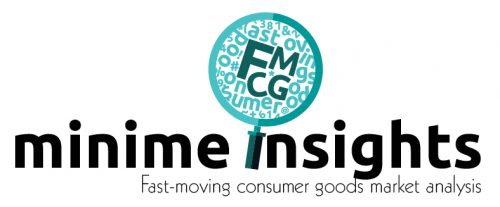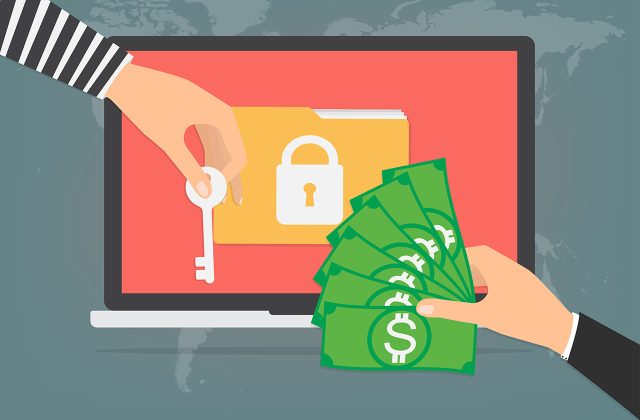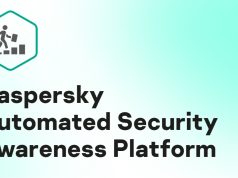A Perspective from the Asia-Pacific
By Genie Sugene Gan, Head of Government Affairs, Asia-Pacific, Kaspersky
15 December 2021
NotPetya, WannaCry, ShadowPad, and Sunburst may or may not be household names, but these malware, and many more, have unleashed significant harm on the world.

Recently, one such instance of malware was used to attack an IT services company based in Dublin, which supplies security software to scores of large cybersecurity contractors. Working through the company, hackers infected hundreds of its clients worldwide with ransomware, and demanded USD 50,000–5 million from each business in exchange for the decryption key.
Earlier this year, another attack hit an American IT software company, and subsequently infiltrated nine U.S. federal agencies, including the Office of the President, and the Treasury and Commerce Departments.
What these attacks have in common is their modus operandi: hackers targeted software vendors or IT companies to gain backdoor access to their clients’ systems, infecting hundreds and thousands of systems in one go.
This is perhaps how “supply chain” got its name – each part of the process stream is inevitably linked to another. When one part gets affected, a domino effect soon follows.
The Problem
ICT supply chain cyberattacks are on the rise – the European Union for Cybersecurity estimates a four-fold growth in attacks in 2021 compared to 2020[1]. The risk is compounded as vulnerabilities can be introduced at any phase of the ICT life cycle: from design – through development, production, distribution, acquisition and deployment – to maintenance.
The impact of these breaches is also set to grow, given the increasing interconnection of IT systems across organizations, sectors and countries. In a 2019 survey by Gartner, 60% of organizations reported working with more than 1000 third parties[2].
Upon successful infiltration, cybercriminals enjoy free rein to conduct cyber espionage, steal data and intellectual property, or extort money through ransomware attacks, which have been on the rise. From 2019 to 2020, the number of Kaspersky users encountering targeted ransomware – malware used to extort money from high-profile targets such as corporations, government agencies, and municipal organizations – increased by 767%[3].
While the impact on governments and enterprises may feature more prominently, the wider public is not spared. An attack on a grocery chain could force the temporary closure of scores of supermarkets, or a virus may be unleashed on millions of PC users through a software update (as, for example, occurred in the ShadowHammer3+1 attack, which Kaspersky detected and promptly mitigated in 2019[4]). Taking it further, the compromise of systems providing healthcare or public utilities may disrupt the provision of these essential services. And these are the very day-to-day things that affect individuals like you and me.
Early Responses
Recognizing the risks and impact of supply chain cyberattacks, more countries are taking action. Since 2020, national cybersecurity strategies were either released or updated across Asia-Pacific, including in Singapore, Malaysia, Australia and Japan. Other countries, like Vietnam, India and Indonesia, are soon expected to release their own national strategies or implementation details too.
But when it comes to ICT supply chain resilience, the solution is more complex in view of the multitude and range of stakeholders involved. Some governments have intervened, with a focus on protecting the ICT supply chains of Critical Information Infrastructure (CII):
- In 2018, the S. Department of Homeland Security established the ICT Supply Chain Risk Management Task Force, a public-private partnership to develop consensus on risk management strategies to enhance global ICT supply chain security. The Task Force has released guidelines on the sharing of supply chain risk information, and risk considerations for managed service provider customers.
- The Australian Cyber Security Centre also published guides this year for businesses to identify cybersecurity risks associated with supply chains, and to manage these risks.
- The Cybersecurity Agency of Singapore announced that it will shortly launch a CII Supply Chain Programme for stakeholders to adhere to international best practices and standards for supply chain risk management.
The Way Ahead
The global nature of ICT supply chains necessitates a stronger, coordinated response at every level.
Globally, countries and International Organizations (e.g., INTERPOL, the UN, ASEAN, Europol) have taken steps to tighten cooperation and share best practices:
- Multilateral platforms – Today, the United Nations Group of Governmental Experts and Open-ended Working Group are platforms that can be used by countries to develop consensus around cyber processes and norms. Conferences such as the UN Internet Governance Forum provide further opportunities to discuss at the working level: in 2020, Kaspersky together with our partners organized a workshop to discuss the need and ways to develop assurance and transparency in global ICT supply chains.
- Bilateral partnerships – Countries around the region, including Vietnam, India, Japan, Singapore, China and South Korea, have committed to MOUs on various aspects of cybersecurity – an important step in making progress domestically and globally.
While each of these platforms plays an important role in building consensus, exchanging knowledge and best practices, and harmonizing standards, moving forward, it is imperative to have more targeted conversations on global ICT supply chain resilience, given the wide-ranging types of actors and impact involved globally.
Nationally, governments must continue to drive nationwide efforts to establish a baseline level of cybersecurity across sectors through laws, regulations, guidelines, training requirements and awareness building. The examples above provide a sense of some of the measures undertaken by governments.
Given the integrated nature of ICT supply chain resilience, there is a particular need to develop core principles (e.g., security-by-design), technical standards and legislative/regulatory frameworks to ensure a consistent level of cybersecurity and accountability across stakeholders. Self-assessment tools can also be published in addition to facilitate implementation.
Individually, everyone is responsible for ensuring our collective cybersecurity. Naturally, businesses that develop products and maintain systems must lead the way.
At Kaspersky, we believe that transparency in the components within and connections across software supply chains is the best way to ensure the integrity and trustworthiness of our digital infrastructure. Our commitment to this principle is evidenced by our Global Transparency Initiative, where, among other things, we:
- Welcome third parties to review our source code. More recently, we made it easier for our partners and the public to understand what is inside our products by providing a software bill of materials – a list of all the components, information about them, and the relationships between them.
- Practise responsible vulnerability disclosure, and have on many occasions, alerted IT companies regarding vulnerabilities in their systems, averting several potentially significant cyberattacks.
Cybersecurity is everyone’s business because our collective cybersecurity is only as strong as that of the weakest link among us. To remain ahead of the game, a holistic approach involving all stakeholders is required. We must look beyond playing catch-up and reacting to cyberthreats. It is imperative to take a long term approach in designing the cybersecurity ecosystem, which includes building a strong talent pipeline to meet the needs of CERTs, forensic analysis teams and IT departments, and designing CII that is secure-by-design.
The ideas above are by no means an exhaustive list, but hopefully they provide an idea of where to begin – together – in view of the long way that lies ahead of us.
[1] Source: https://www.enisa.europa.eu/news/enisa-news/understanding-the-increase-in-supply-chain-security-attacks
[2] Source: https://www.gartner.com/smarterwithgartner/a-better-way-to-manage-third-party-risk
[3] Source: https://www.kaspersky.com/about/press-releases/2021_the-era-of-targeted-ransomware-attacks-on-high-profile-victims-grows-nearly-eightfold-from-2019-to-2020
[4] Source: https://securelist.com/operation-shadowhammer-a-high-profile-supply-chain-attack/90380/













